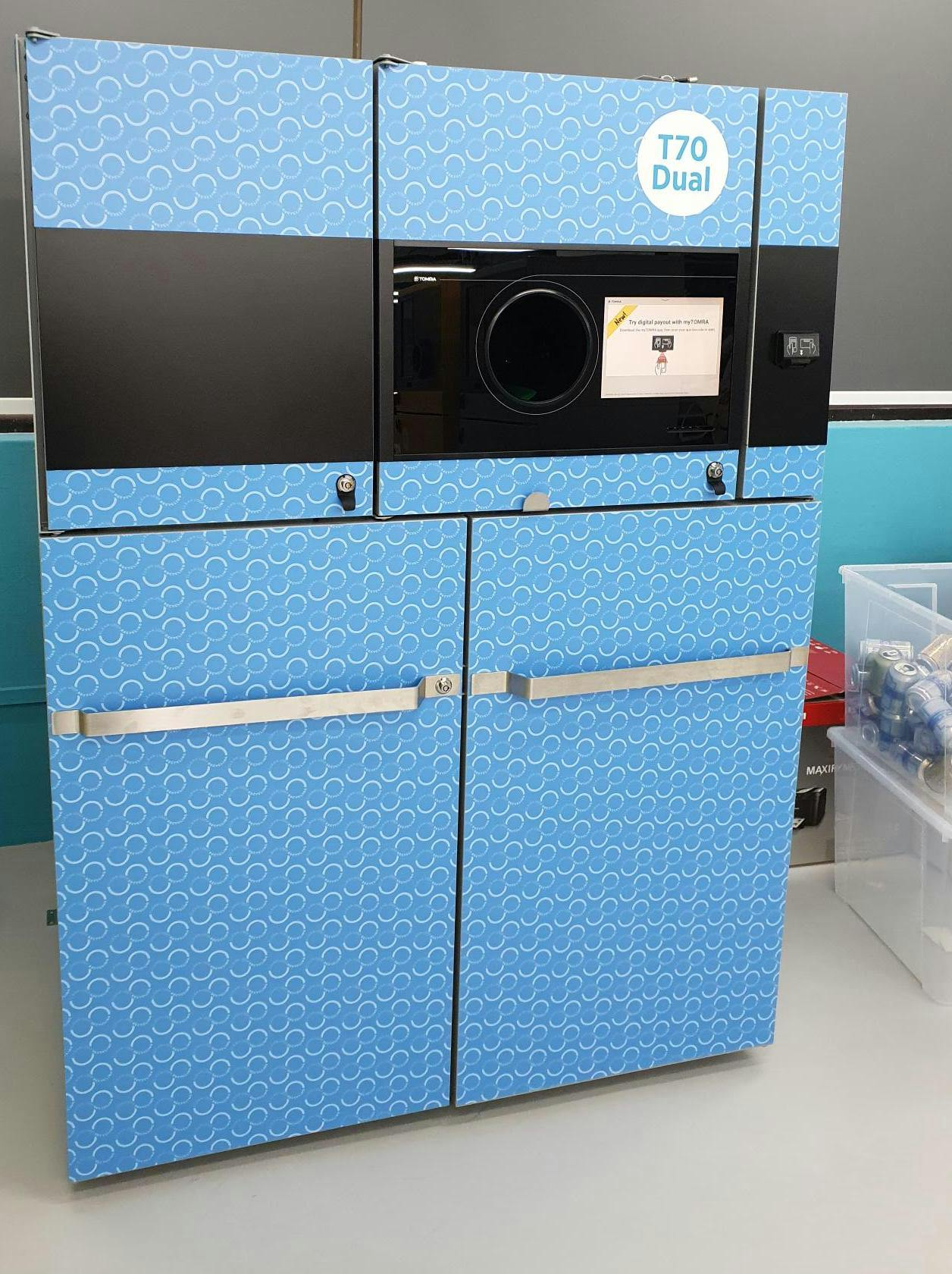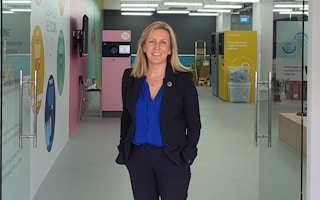After buying a pre-prepared beverage from a supermarket or the hawker centre, you consume it, then walk to the nearest reverse vending machine (RVM) and deposit the empty plastic container or drink can for recycling. The amount you paid as a deposit for your container automatically gets refunded into your bank account, or you could get a receipt with a QR code with a discount for your next purchase.
This is how Tove Andersen, president and chief executive officer of Tomra, hopes the future will be for recycling single-use drink containers in Southeast Asia. When Singapore implements the beverage container return scheme (BCRS) in 2024, it will be the first country in the region to have such a scheme. The public consultation for the BCRS, organised by Singapore’s National Environment Agency (NEA), runs from 20 September to 14 October 2022.
Andersen, who has been in her role for a little over a year, hopes that Tomra can help with the BCRS consultation process in Singapore. Fifty years ago, the first automated RVM prototype was established by Tomra to collect glass bottles for recycling. Since then, RVMs have gone through numerous improvements – they now use sophisticated sensor technology to recognise, sort and handle the return of used beverage containers (e.g. plastic bottles, metal cans, paper and mixed packaging such as Tetra Pak cartons), process and compress them for ease of transport to recycling centres, and prevent fraudulent use of the machines.
In this interview, Andersen tells Eco-Business how she sees Asia’s growing waste management challenge and the impact that deposit return schemes could have in reducing marine pollution.
What is your vision for recycling in Asia, and what steps is Tomra taking to realise this?
Tomra is currently active in 11 countries in Asia, but its main business is in Europe, Oceania and North America. Asia is currently still a fairly small part of our operations, but also an area where we see growth opportunities. When you look at resource management and resource optimisation, Asia still has significant potential to improve, so we want to use our experience to contribute to the transition that Asia needs to go through.
Asia itself is quite diverse – there are more developed countries like South Korea and Japan, as compared to some of the emerging countries in which there is a lack of formal waste management infrastructure. In these countries recycling is not driven by legislation but by profitability. So you’ll typically have an informal sector, such as waste pickers who collect the PET bottles and sell them for recycling.
But in order for there to be a scalable solution for waste, you’ll need to have legislation such as Extended Producer Responsibility (EPR), where the producer takes responsibility. You can’t expect the general population, through tax or government, to cover the cost for the waste management structure.
What Singapore has done really well is that they’ve looked at other countries and spent time looking at best practices, engaging with local stakeholders, and studying the local context to put in place measures that work. That’s where Tomra can help – with the knowledge of key elements that we know should be in place to make schemes [like BCRS] work.
Then we share that with the whole industry, with governments and legislators, to help them design the schemes that will best meet the target of high waste collection rates at the lowest cost. Our target is that Singapore will have a well-designed, well-functioning beverage container return system that will be an inspiration to other countries in Asia.
Based on Tomra’s experience, what are key things that need to be in place for schemes like the BCRS to work?

A reverse vending machine where people can return empty beverage containers like bottles and cans for recycling. Image: Tomra.
First of all, it must be convenient for the consumer. So there needs to be collection points close to where the consumer lives. In Singapore, only a third of pre-prepared beverages in containers are bought at the retailer. They can also be bought at small shops [e.g. minimarts], hawker centres and so forth.
In Europe, people return them at retail sites. But you can’t only have that in Singapore. You will need to have more collection points – not just at retailers, but also close to where people live, at community centres and hawker centres, for example.
Secondly, the deposit value needs to be high enough to make it worthwhile for people to return their containers. If the value is too low, people will think that it’s not worth their time to store the containers and then return them later.
The current consultation in Singapore with NEA is for the deposit to be between 10 and 20 cents [about 7 to 14 US cents]. Based on our experience, we would support a 20 cent deposit, then people will be willing to go a bit further to return the bottles.
Communication between NEA and the public is important – because it’s a deposit amount and not a surcharge or an additional cost. As long as people return it when it’s convenient for them, they’ll get the money back as soon as they want.
Singapore has an ageing population. How do you think we can make recycling schemes like BCRS more accessible to the elderly or those with disabilities?
We’ll have to make sure that the return sites are where people would typically go to buy their beverages in containers, so that returning the containers would be part of their journey. We also ensure that there are easy access for people in wheelchairs.
What we’ve also seen is that when you have return schemes like these, there will be an emergence of an informal sector that will pick up and return containers as well. The good thing about schemes like BCRS is that it puts a value on waste – it is no longer just waste, but a valuable material. Even if you don’t care about the deposit and you throw the container away, someone else will see its value, pick it up and return it.
That’s what we’ve seen happen in countries in Western Europe – the amount of plastic litter in public places like beaches and parks has decreased as a result of return schemes. Even children will pick up waste and return it to the machine, then use the money to buy something for themselves like an ice cream.
“
Schemes like BCRS put a value on waste – it is no longer just waste, but a valuable material.
Tove Andersen, president and CEO of Tomra
How many collection points do you think Singapore will need for a successful BCRS?
There are about 400 major retailers [that are at least 200 square metres large] that will be mandated to take their containers back. In addition to these, we believe that you should have collection points close to where people live, as I earlier mentioned. So there will probably be about 1,000 to 1,200 collection points required.
Not all of them necessarily need to have an RVM if they are small – consumers can manually hand them over at retail points, but that’s labour intensive and time consuming. And larger retailers might have more than one RVM.
Some would say treating and managing post-consumer packaging only solves part of the problem. Essentially, brands and corporates have been quite slow in rethinking packaging solutions to cut down on virgin plastic use. What are TOMRA’s thoughts on that?
We don’t believe that recycling is the whole solution. We believe in the waste hierarchy – the three Rs: reduce, reuse and recycle. But recycling does play an important role, and it’s a significant contribution if you have a good functioning BCRS and you’re collecting and recycling 90 per cent of the bottles. Because when you produce plastic, you use oil and produce CO2 emissions, and also when you incinerate it.
But there’s a significant reduction in CO2 if you manage to recycle the plastic. And if you look at all the resources we consume in the world today, only 9 per cent of what we use every year gets recycled. In Singapore, the recycling rate is only 6 per cent for plastic, which surprised me because Singapore is such an advanced country.
What are some of your biggest personal environmental concerns, and how does this relate to how you function as a business leader and how you go about your everyday life?
I have two children, aged 18 and 20, and I would like for them and future generations to live in a safe and green world. The extreme weather situations we have been experiencing of late is a scary precursor of what is to come if we don’t get to net zero.
Plastic in the environment also concerns me greatly. When you see the amount of plastic that is in the ocean, I think this will have severe consequences beyond what we have currently understood. [The Ellen] MacArthur [Foundation] did a study that found that if we continue the way we do now, there will be more plastic than fish in the ocean by 2050. I’m quite excited that the United Nations is beginning negotiations for a treaty on plastic pollution, which I hope will be a game changer.
In my personal life, I’m not perfect, but I’m trying to be conscious of the choices I make. I’m quite good at recycling – you should see my system at home! And I drive an electric car. I fly quite a lot in connection with my job, which I feel quite bad about, but at the same time, I believe the biggest impact I can make is by growing Tomra and sharing the competence and knowledge that we have throughout the world.












